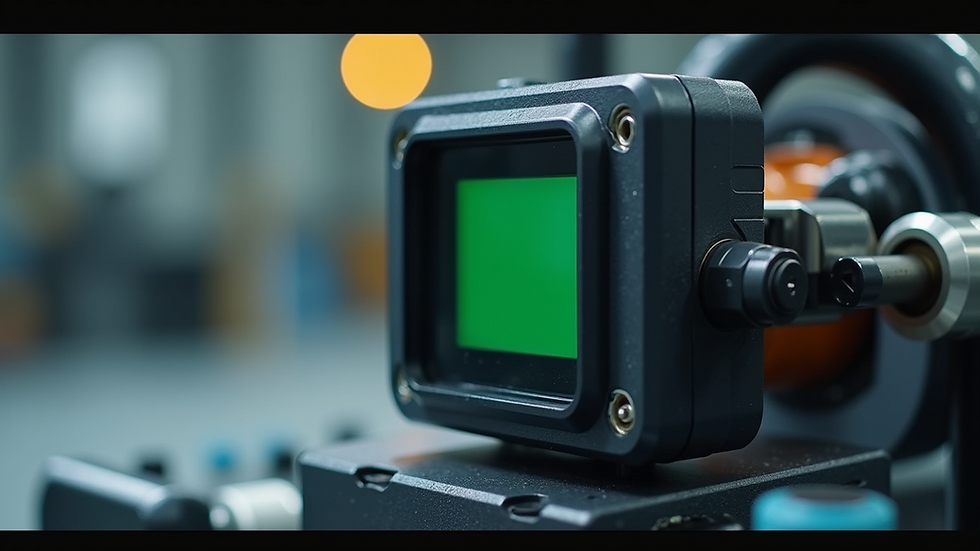Tailored Approaches to Custom Sensor Design
- Renee Lorenzen
- Oct 20
- 3 min read
Updated: Nov 10
Industrial automation, robotics, and manufacturing demand precise and reliable sensing technologies. Off-the-shelf sensors often fall short when unique operational conditions or specific performance criteria are involved. Customized sensing solutions address these challenges by adapting sensor design to exact application needs. This approach enhances accuracy, durability, and integration, ultimately improving system efficiency and safety.
Understanding Customized Sensing Solutions
Customized sensing solutions involve designing sensors that meet specific requirements beyond standard capabilities. These solutions consider factors such as environmental conditions, measurement range, response time, and physical constraints. For example, a sensor used in a high-temperature manufacturing process requires materials and components that withstand heat without degradation.
Customization also extends to signal processing and communication protocols. Tailored sensors can output data in formats compatible with existing control systems, reducing integration time and cost. This flexibility is crucial in industries where downtime impacts productivity and profitability.
Key Benefits of Customized Sensing Solutions
Enhanced Performance: Sensors optimized for particular tasks deliver more accurate and reliable data.
Improved Durability: Materials and designs suited to harsh environments increase sensor lifespan.
Seamless Integration: Custom interfaces and communication protocols simplify system compatibility.
Cost Efficiency: Avoids over-specification and reduces maintenance expenses by targeting exact needs.

Designing Sensors for Specific Industrial Applications
Each industrial sector presents unique challenges that influence sensor design. In automation, sensors must provide rapid and precise feedback to control systems. Robotics applications require compact sensors with high sensitivity and resistance to mechanical stress. Manufacturing environments often expose sensors to dust, moisture, and chemicals, necessitating robust protective features.
Environmental Considerations
Temperature: Sensors for high-heat environments use heat-resistant materials and cooling mechanisms.
Humidity and Moisture: Sealing and coating techniques prevent corrosion and electrical failures.
Vibration and Shock: Shock-absorbing mounts and rugged housings protect sensor components.
Functional Requirements
Measurement Range: Custom sensors can be calibrated for narrow or wide detection ranges.
Response Time: Fast response sensors improve real-time control and safety.
Signal Output: Options include analog, digital, or wireless communication tailored to system needs.

Engineering and Manufacturing Expertise in Sensor Customization
Developing effective customized sensing solutions requires deep engineering knowledge and manufacturing capabilities. The process begins with a thorough analysis of the application, including operational conditions and performance goals. Engineers then select appropriate sensing technologies such as magnetic, optical, or capacitive sensors.
Prototyping and testing are critical to validate sensor performance under real-world conditions. Iterative design adjustments ensure the final product meets all specifications. Advanced manufacturing techniques, including precision machining and microfabrication, enable the production of complex sensor geometries.
Collaboration and Support
Working closely with clients throughout the design process ensures alignment with operational needs. Post-deployment support includes calibration services, troubleshooting, and upgrades to maintain sensor effectiveness over time.

Practical Recommendations for Implementing Customized Sensors
To maximize the benefits of customized sensing solutions, consider the following steps:
Define Clear Objectives: Identify the exact measurement parameters and environmental challenges.
Engage Experienced Partners: Collaborate with sensor manufacturers who specialize in tailored designs.
Prototype Early: Test sensor concepts in the intended environment to uncover potential issues.
Plan for Integration: Ensure compatibility with existing control and data acquisition systems.
Maintain Flexibility: Design sensors that allow for future modifications or upgrades.
By following these guidelines, industrial companies can reduce risk and accelerate deployment of effective sensing solutions.
Advancing Industrial Capabilities with Tailored Sensors
Customized sensing solutions transform how industrial systems detect, monitor, and respond to operational variables. They provide the precision and reliability necessary for advanced automation, robotics, and manufacturing processes. Leveraging specialized engineering and manufacturing expertise enables the creation of sensors that solve complex detection, safety, and tracking challenges.
I rely on custom sensor design to deliver these tailored solutions. This approach supports the goal of becoming a global leader in magnetic sensing technologies, helping industries worldwide optimize performance and safety.
The future of industrial sensing lies in customization. Companies that invest in tailored sensors gain a competitive edge through improved efficiency, reduced downtime, and enhanced product quality. Embracing these solutions is essential for meeting the evolving demands of modern industrial environments.



